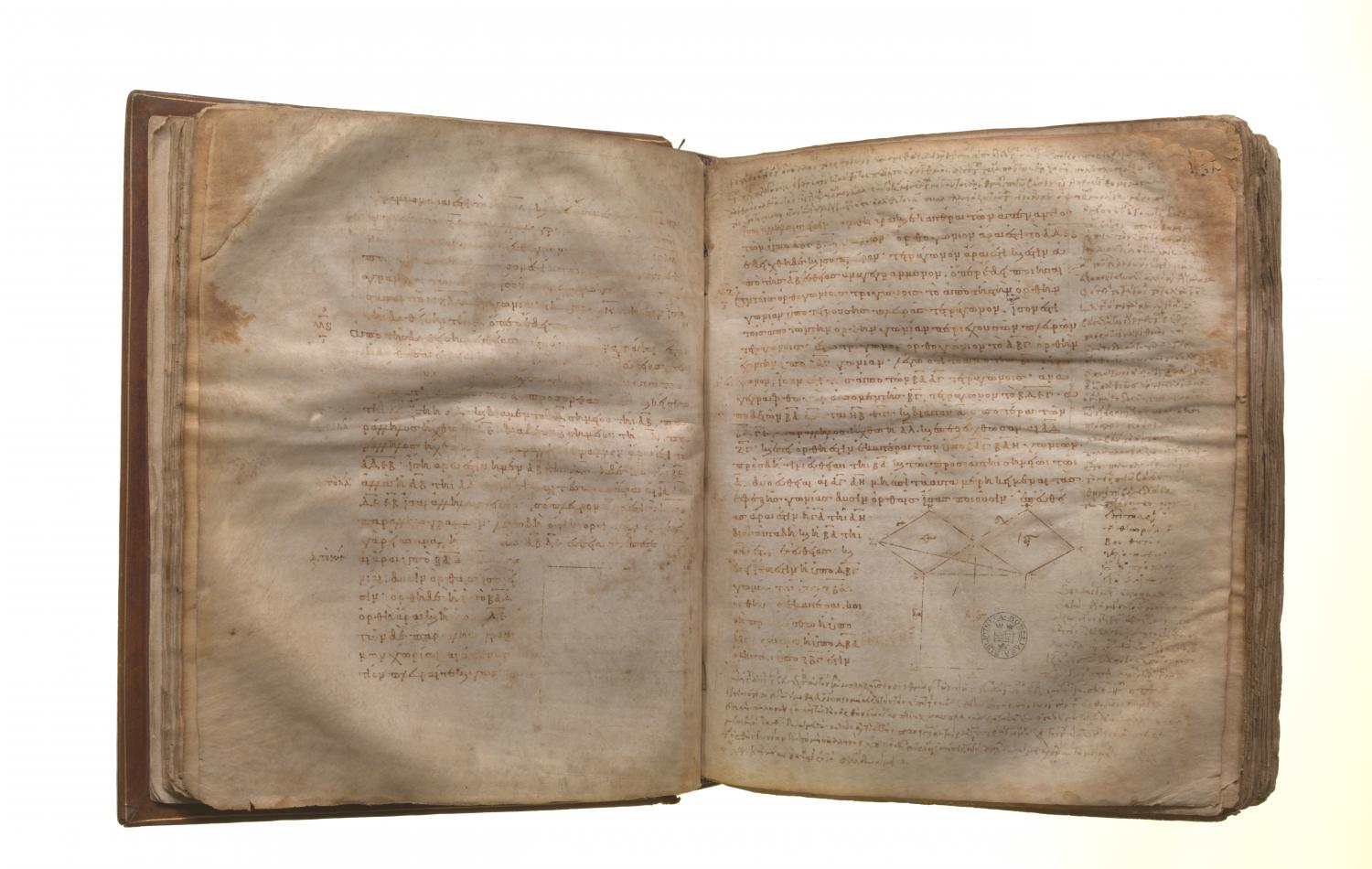Translations
On a given straight line to describe a square. Let AB be the given straight line; thus it is required to describe a square on the straight line AB. Let AC be drawn at right angles to the straight line AB from the point A on it [I. 11], and let AD be made equal to AB; through the point D let DE be drawn parallel to AB, and through the point B let BE be drawn parallel to AD. [I. 31] Therefore ADEB is a parallelogram; therefore AB is equal to DE, and AD to BE. [I. 34] But AB is equal to AD; therefore the four straight lines BA, AD, DE, EB are equal to one another; therefore the parallelogram ADEB is equilateral. I say next that it is also right-angled. For, since the straight line AD falls upon the parallels AB, DE, the angles BAD, ADE are equal to two right angles. [I. 29] But the angle BAD is right; therefore the angle ADE is also right. And in parallelogrammic areas the opposite sides and angles are equal to one another; [I. 34] therefore each of the opposite angles ABE, BED is also right. Therefore ADEB is right-angled. And it was also proved equilateral. Therefore it is a square; and it is described on the straight line AB.
